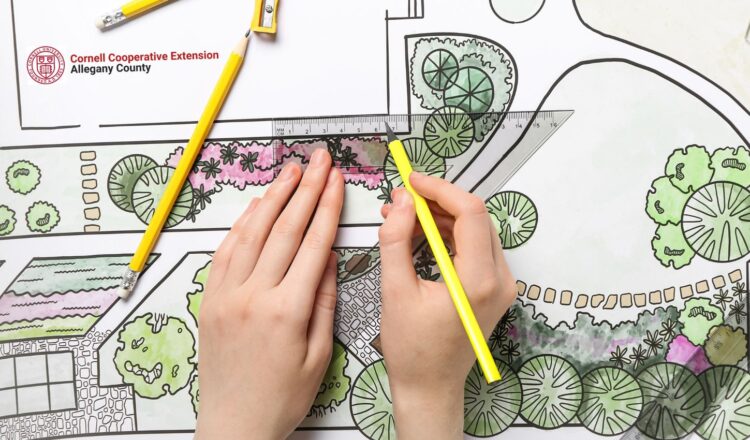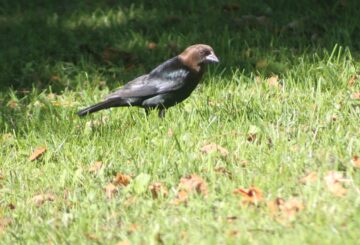Three key tips from the experts on planting and growing
By Cristian Acosta, Agriculture Educator & Master Gardener Volunteer Coordinator, Cornell Cooperative Extension Allegany County
As the frost thaws and the days gradually lengthen, gardeners across New York State anticipate the arrival of spring and the opportunity to cultivate their gardens once again. Planning your spring garden is an important step to have a successful and abundant harvest later in the year.
It sounds easy, right?
A plan could be just going to the store and get couple seeds or seedlings and waiting for warmer days to move them to the garden, and that’s it! Well, this would be easy, but the results probably could be different than excepted.
To make sure that we can have a great gardening season , let’s explore effective strategies for selecting seeds, organizing your garden layout, and starting seeds indoors to kickstart your spring garden with confidence.
1. Selecting Seeds:
Choosing the right seeds is the key for an easier and abundant garden. Consider factors such as your climate zone, hardiness zone, microclimates (if any), available space, and personal preferences when selecting seeds for your spring garden. Select varieties that are well-suited to the growing conditions in New York State, seeds from local plants will be easier to grow compared to seeds from a different climate.
- Research: Take the time to research different seed varieties and their specific requirements. Look for varieties that are known to perform well in your area, taking into account factors such as frost tolerance, days to maturity, and disease resistance.
- Diversity: Embrace diversity in your seed selection to create a resilient garden ecosystem, also to avoid pest issues. Choose a mix of vegetables, herbs, flowers, and perhaps even some native plants to attract pollinators and beneficial insects.
- Quality: Invest in high-quality seeds from reputable suppliers to ensure germination success and healthy plant growth. Look for organic, non-GMO seeds whenever possible to support sustainable gardening practices. Also look for local seeds, if possible, they will be easier to grow, especially if you’re just starting with gardening projects.
2. Organizing Your Garden Layout:
Careful planning and organization are essential for maximizing space and optimizing growing conditions in your spring garden. It doesn’t matter if you have a big or small area, thoughtful layout design can make a difference.
- Site Selection: Choose a sunny, well-drained location for your garden beds to provide optimal growing conditions for your plants. Consider factors such as access to water, wind exposure, and proximity to trees or structures that may cast shade, unless you choose a plant that requires shade.
- Crop Rotation: Practice crop rotation to prevent soil depletion and minimize pest and disease problems. Plan your garden layout to rotate crops from year to year, avoiding planting the same family of plants in the same location consecutively. The key is rotating families of plants, for example: rotating tomatoes for potatoes won’t work because they are the same family of plant (Solanaceae). How to know this? search online “tomato scientific family” or using similar words to find your plant’s family name and use this information for crop rotation.
- Companion Planting: Take advantage of companion planting principles to promote plant health and maximize yields. Plant complementary crops together to deter pests, improve soil fertility, and enhance flavor.
3. Starting Seeds Indoors:
Starting seeds indoors allows you to extend your gardening season and ensure robust seedlings for transplanting outdoors once the weather warms up. You will also be preventing your seeds from being consumed by animals outside.
- Timing: Start seeds indoors according to the recommended timing for your specific plant varieties and the average last frost date in your area. Consult a planting calendar or use online resources to determine the appropriate sowing dates for each crop.
- Containers and Growing Medium: Choose containers with adequate drainage holes and fill them with a high-quality seed starting mix or potting soil, consider using biodegradable pots or trays that can be planted directly into the soil to minimize transplant shock or avoid breaking their roots/stems.
- Light and Temperature: Provide sufficient light and consistent temperatures to promote healthy seedling growth. Place seed trays in a sunny south-facing window or invest in supplemental grow lights to ensure adequate light levels for strong, sturdy seedlings. If using artificial lights, read the labels/manuals to make sure you provide the right amount of light for your plants, too much light can cause stress in your plants. If you are using artificial light, make sure to follow the manufacturer’s recommendations, the height of the light will change depending on the type of plant and its growth stage, too much light or too little light will cause plants to become stressed.
By following these strategies for selecting seeds, organizing your garden layout, and starting seeds indoors, you can lay the groundwork for a successful spring garden. With careful planning and a little bit of patience, you’ll be rewarded with an abundant garden harvest with fresh vegetables, herbs, and colorful flowers to enjoy throughout the growing season.
Get ready for this 2024 gardening season, and if you have questions about what to do next, how to control pests, soils tests, seed starting, etc., Cornell Cooperative Extension Allegany County and our group of Master Gardener Volunteers will always be happy to help you on this gardening journey. Stay tuned for our gardening events (most of them for free!) and keep mastering your gardening skills. Happy gardening!







